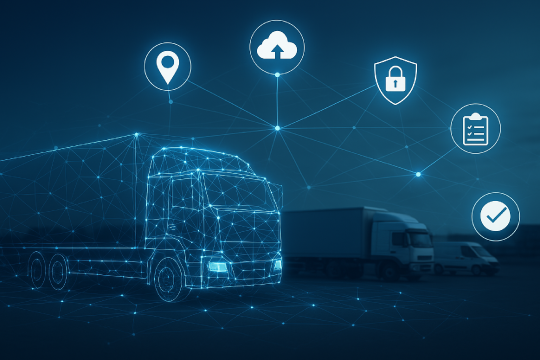The 2021 fleet management plan: How to stay a step ahead of market trends
Many companies’ business plans are designed to overcome challenges they failed to anticipate in the past. The idea is simple: “These problems tripped us up before, let’s make sure they don’t trip us up again.”
But backward-looking plans have a fatal flaw: Business plans shouldn’t solve yesterday’s problems, they should solve tomorrow’s. When companies fail to anticipate changes in the marketplace, the economy, and technology, those changes will force them to redraw their plans from scratch.
2020’s problems were so overwhelming that it’s difficult for many fleet professionals to think too far into the future. Fleets are still recovering from the strain that coronavirus put on fulfillment operations. That’s why FleetUp’s industry experts have talked to customers, dug into the data, and uncovered five of the challenges fleet professionals should plan for in 2021:
1. More fleets will abandon antiquated management processes
The “whiteboard method” of management has its charms. It’s old school, it’s simple, and it’s familiar. Even when most other industries abandoned the method, fleets kept everything up on the whiteboard.
In 2021, the era of whiteboard management is coming to an end. Whenever a fleet throws out manual management tools, its competitors have to follow their lead in order to keep up. The process is exponential. As customers choose companies with leaner, cheaper, and faster management processes, this will probably be the year when the whiteboard method makes its last stand.
2. Telematics software will make the industry faster paced and more competitive
As the whiteboard era ends, many fleets are leapfrogging from 1980s management tools straight to 2020s management technologies. Instead of using a barrage of software programs to manage different aspects of their business, they’re using a single comprehensive telematics solution.
Telematics captures every aspect of fleet management, from GPS location to engine status to driver behavior and more. The best telematics platforms show the real-time status of assets, employees, and worksites on one interactive screen. Managers not only see their entire operation in real time, they’re also able to click on assets to contact drivers, send ETAs to customers, and more.
Telematics speeds up fleets, cutting fat and adding muscle. It helps businesses add new customers and compete in new markets without hiring new employees, buying more assets, or increasing management workloads. Telematics adoption will make 2021 another competitive year for fleets throughout the industry.
3. Liability risk continues to grow
Dangerous drivers are putting trucking companies out of business. When they crash, businesses are liable for damages, and nuclear verdicts force companies into bankruptcy. While industry professionals have bemoaned the size of these verdicts for years, juries continue to hand down harsh judgements.
In order to reduce potential liability, managers will need to carefully monitor reckless driving. Advanced telematics software automatically monitors every driver whenever they get behind the wheel. It grades individual drivers and identifies a fleet’s biggest liabilities. There’s no more efficient way to protect a dispersed, on-the-move operation.
4. Customers will expect more transparency
Companies like Amazon have revolutionized customer shipping expectations. Consumers expect to know exactly when their orders will arrive on their doorstep – and even follow the progress of their deliveries on live online maps.
Businesses that make thousand-dollar orders have higher service expectations than customers who make orders that are worth a few bucks. People who receive great customer support at home will want to be treated even better when they make large purchases at work. Industry leaders set the precedent – now everyone else has to keep up.
Fleets can surpass customer expectations with tools like FleetUp’s Live ETA and Trip Sharing. These features go beyond the simple GPS location and delivery date information. Users can share everything from exact delivery time to driver HOS status to engine health data. It’s the next level of customer service and it’s available now.
5. Economic uncertainty will increase risk of theft
Coronavirus’ economic impact was uneven, hitting service sector employees much harder than white collar professionals who were able to work from home. In 2021, as vaccines become more widely available and congress debates a stimulus bill, there’s reason to hope that the COVID recession will quickly fade.
But just as the recession’s initial impact was uneven, the recovery will also be uneven. Researchers have shown that high unemployment rates boost property crime rates. As the current unemployment rate remains high, it’s best for businesses – especially those with valuable assets – to guard against lost valuables. That’s why theft prevention software will be the key to avoiding losses in 2021. It automatically keeps track of every valuable asset, 24 hours a day, notifying you the moment assets are being misused or taken off worksites.
Prepare for the future with fleet management software
With a little luck, 2021 won’t be as challenging as 2020. But even if this year doesn’t have any surprises as overwhelming as coronavirus, it will still find new ways to keep fleets on their toes. Prepare for the unexpected with a comprehensive telematics system.
Want to learn how FleetUp will help you manage your remote worksites?
|






